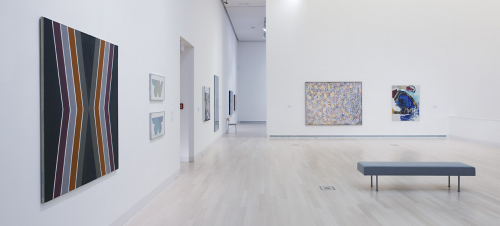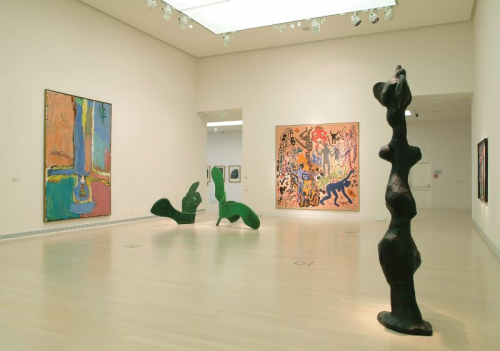Jasper Johns exhibited his first iconic flag paintings in the mid-fifties. The flags, targets, maps, letters and numbers in his paintings raised questions of abstraction, representation and pictorial meaning that are still valid today, and the inclusion of everyday objects and subjects anticipated the aspirations of Pop Art. Throughout his long career, Johns has remained an experimental artist, working on his subjects in series spanning several decades and using a variety of genres and techniques. At the same time, his seemingly self-reflexive oeuvre also reflects his interest in art history and in artists such as Duchamp, Cézanne, Magritte, Munch, and Picasso. The distinctive motif of Corpse and Mirror (1976–77), a structure of parallel brushstrokes and their rotation and mirroring, first appears in a painting in 1972. The qualities of the pattern – simplicity, repetition, meaninglessness – developed by hatching, enabled him to experiment with it in many variations and contexts. The vertical central axis of Corpse and Mirror shows a strong mirror symmetry, while vertically the picture is divided into three bands, where the motifs are only partially reflected, elsewhere they are continuous and interconnected. On the right side of the picture, the red, yellow and blue colours are complemented by purple, green and black stripes, giving a darker tone and spatiality to this half of the picture. The mysterious title and the structure (folding) refer to the Surrealists’ favourite game, “Exquisite Corpse”, where players continued and completed each other’s work by folding back the drawings or lines of poetry of their fellow players. In the 1980s, Johns also associated the hatched structure with Edvard Munch’s 1942 self-portrait and the pattern of the bedspread in it, where he also referred to the art historical antecedent by the title (Between the Clock and the Bed).
Krisztina Szipőcs

